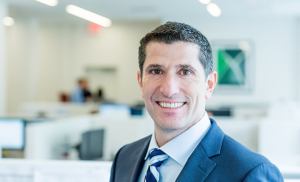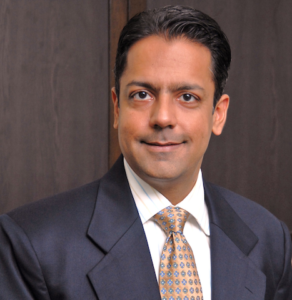In the summer of 2015, David Lat invited David Perla to become an Above the Law columnist. The column, “What’s Possible”, launched in September of that year. In that column, David noted that his role at the time afforded him the opportunity to think about various issues relating to the future of law, including:
- How can lawyers make use of data to perform their jobs?
- How will the development of artificial intelligence affect the practice of law?
- What’s possible for law students, women and minority attorneys, law firm COOs, and litigators and other practitioners?
- Where is the dividing line between legal tasks that can be automated and those that must be performed by humans?
Those questions remain as relevant as they were three years ago. And since Sanjay joined as co-columnist, we’ve had the opportunity to explore many other questions, ideas, and topics beyond our historical experience in tech-enabled services, outsourcing, offshoring, legal information, and news.
Earlier this spring, we found ourselves drawn to areas of the industry that are innovative and transformative, but don’t necessarily (so we thought) have the pizzazz of or buzz factor of the purely tech driven innovations that have been our focus. In “Taste the Soup: Innovation Hiding in Plain Sight”, we explored three of those innovations: Litigation finance, alternative dispute resolution (ADR), and online dispute resolution (ODR).
Reaction to that column was immediate, voluminous, and gratifying. We learned that we weren’t alone in realizing how big and how important those three innovations have become within the larger legal and business industry. Just a few months later, David was asked to meet with leadership at Burford Capital about its continued expansion around the world — and having spent the last year and half studying the many ways law firms and law departments are embracing and adapting new ideas to better serve clients, he found it impossible to resist becoming part of another business and team that’s transforming our industry when he was ultimately invited to join Burford to oversee global origination and marketing.
Since David joined Burford, we’ve had the opportunity to talk with many industry friends and have received many dozens of notes and calls about the move. Just last week, a friend and former client of ours, the head of litigation at a multi-billion dollar division of one of the world’s largest companies, sent David a note that read in part, “I meant to drop you a note when I saw a couple weeks ago that you were with Burford! How is it you always pop up at the bleeding edge of cutting edge legal practice?”We think he’s right, and it highlights how the law remains filled with endless possibilities.
Now two months into his role at Burford, David is seeing firsthand and up close how capital is being leveraged as an asset class, in much the same way we leveraged information, services, and technology in prior roles. Capital, by its nature, is among the most scalable assets, and can be leveraged arguably more than any other asset. In this case, capital can be used by law firms to represent clients that they couldn’t previously represent, and in ways that the firms previously could not accommodate, including contingency arrangements, discounted fees with upside arrangements, and the like. Moreover, companies can now pursue, and in many cases monetize, claims and settlements in ways previously unimaginable. That conversation has changed, with GCs (and CFOs as well) thinking of legal finance as a tool of corporate finance rather than as a means of last resort. Even the largest companies need to manage risk and offload some of that risk in an environment where cases take ever longer and cost ever more money. An important, and non-risk-related, benefit of capital applied in the legal arena is that disputes are transformed from liabilities into assets. And in an interesting twist, applying finance to disputes reduces or removes adverse accounting implications of litigation, allowing in-house legal departments to become a revenue source rather than a cost center. That’s because corporates can offload the downside risk of pursuing litigation recoveries as well as defense matters.
For David, it’s exciting to join another “bleeding edge of cutting edge legal practice” — especially as the balance tips to a world where more and more law firms and an increasing number of their clients begin to see legal finance as a way to reshape the market for legal services rather than simply cut costs at the margins.
Over the past few decades, the legal industry has learned to use technology, process and project management, and offshore resources to improve the way legal professionals serve clients and solve client problems. In many respects, the profession has adapted around these new tools, to the benefit of providers and clients alike. Yet, as a result of a number of factors — including the equity structure of law firms, the difficulty in measuring and quantifying legal risk, and the ability of underwriters to understand both finance and law — law had previously seemed immune to using capital as a force for positive change. That is changing fast, as capital is applied to litigation and a growing array of other areas of the law. We aren’t sure where all this will lead, but — like all industry changes that were driven by leveraging assets not historically applied to law — there will be myriad benefits for clients and law firms alike. And as we continue to ponder what’s possible, we are surer than ever that the possibilities are endless.
Authors
 David Perla (left) is a managing director at Burford Capital responsible for overseeing
David Perla (left) is a managing director at Burford Capital responsible for overseeing Burford’s global origination and marketing efforts and Sanjay Kamlani (right) is a managing director of 1991 Group.
Burford’s global origination and marketing efforts and Sanjay Kamlani (right) is a managing director of 1991 Group.
At the bleeding edge of law was first published as The Bleeding Edge Of Law on Above-the-Law on June 26, 2018 and is re-posted here with David’s kind permission.


Leave a Reply